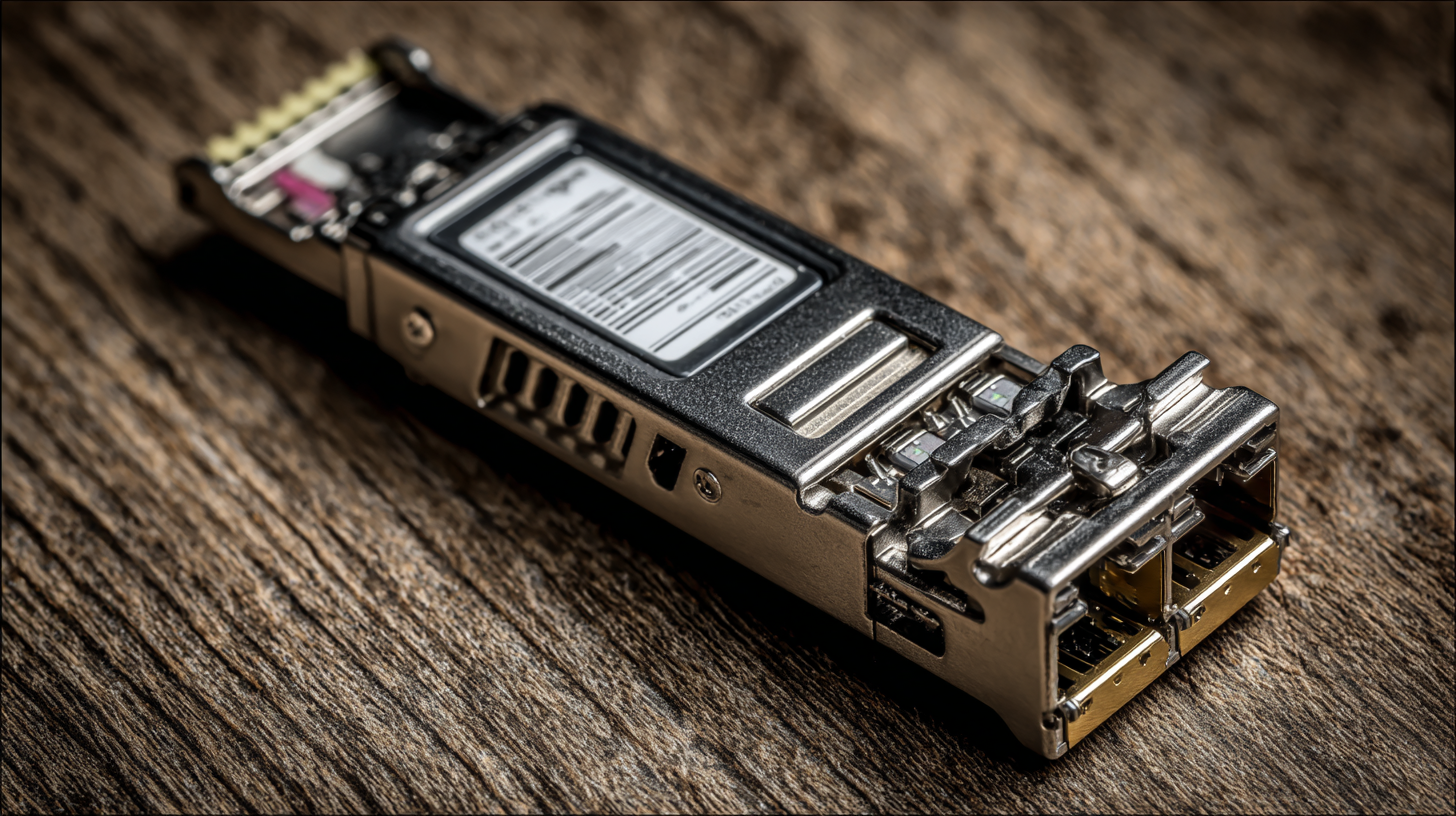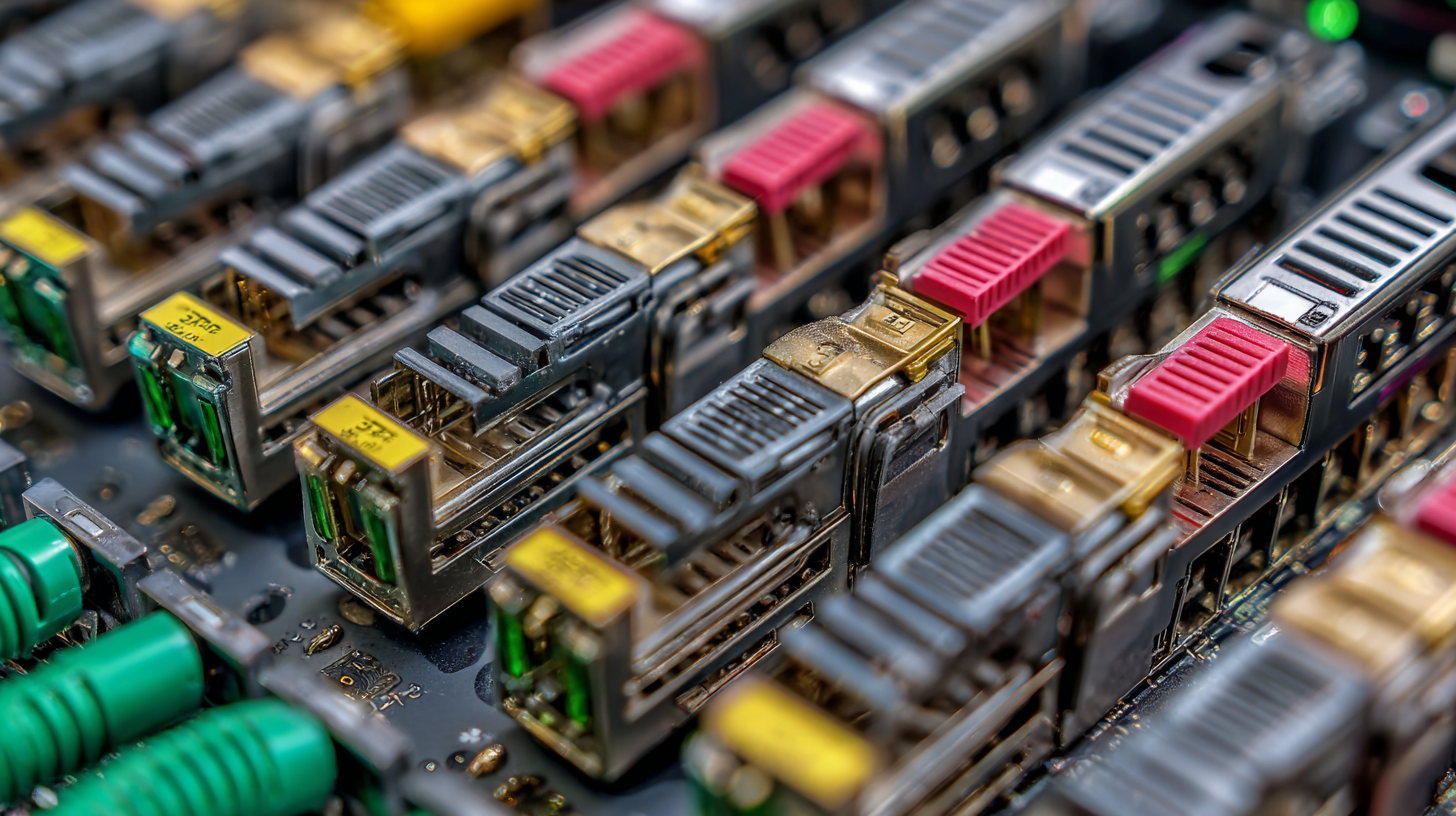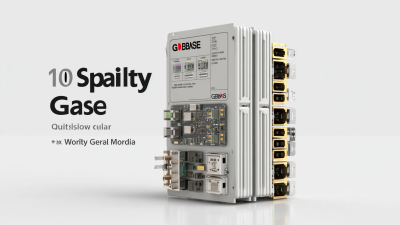Leave Your Message
In today's fast-paced digital landscape, the demand for higher bandwidth and faster data transmission is more critical than ever. According to a report from Allied Market Research, the global optical transceiver market is projected to reach $19.2 billion by 2026, with the SFP+ 10G Transceiver playing a pivotal role in this growth. These compact and efficient transceivers are designed to meet the escalating performance requirements of modern networks, ranging from data centers to enterprise environments. As organizations increasingly rely on high-speed connectivity to drive their operations, selecting the right SFP+ 10G Transceiver becomes essential. This decision impacts not only network performance and reliability but also overall operational costs. Therefore, understanding the key factors that differentiate SFP+ 10G Transceivers is crucial for optimizing network infrastructure and ensuring scalability in the ever-evolving technology landscape.

When evaluating your network requirements for SFP+ 10G transceivers, the first key consideration is the type of network environment you are operating in. Factors such as the physical distance between devices, networking protocols, and data throughput requirements play crucial roles in determining the right transceiver. For instance, if your network involves high-speed data transfer over longer distances, you might need a specific type of optic, such as a long-range (LR) transceiver, while a short-range (SR) option would suffice for closer connections.
Another essential factor is compatibility with existing infrastructure. Ensuring that the SFP+ transceiver you choose is compatible with your current switches, routers, and other devices is vital for seamless integration and performance. Check the specifications and recommendations provided by your hardware vendors to avoid any compatibility issues. Additionally, consider the future scalability of your network. Opting for transceivers that can support advanced features or higher data rates can help accommodate future growth and technological advancements without requiring significant changes to your existing setup.
When choosing an SFP+ 10G transceiver, understanding the different types available and their specific applications is crucial for optimizing network performance. SFP+ modules are categorized primarily into two types: short-range (SR) and long-range (LR). Short-range transceivers are designed for distances up to 300 meters over multimode fiber, making them ideal for data centers and enterprise networks where connections are typically within the same building. According to a recent report by MarketsandMarkets, the demand for multimode fiber solutions is expected to grow significantly, driven by the increasing need for high-bandwidth applications in cloud computing and virtualization.
On the other hand, long-range transceivers cater to distances of up to 10 kilometers over single-mode fiber, suitable for enterprise networks requiring interbuilding connections or service provider applications. A report by Grand View Research indicates that the global optical transceiver market is projected to reach USD 18.83 billion by 2025, with the growing adoption of high-speed networks playing a key role in this growth. Choosing the right transceiver type according to your specific operational range and application needs can greatly influence the efficiency and reliability of your network infrastructure.
| Transceiver Type | Distance | Wavelength | Cable Type | Application |
|---|---|---|---|---|
| SR | Up to 300 m | 850 nm | OM3/OM4 Multimode Fiber | Data Center, Short Range |
| LR | Up to 10 km | 1310 nm | Single-Mode Fiber | Long Distance Links |
| ER | Up to 40 km | 1550 nm | Single-Mode Fiber | Extended Reach Applications |
| ZR | Up to 80 km | 1550 nm | Single-Mode Fiber | High-Density and Long Distance |
When selecting the right SFP+ 10G transceiver for your network, it’s crucial to analyze key performance metrics such as data rate, distance, and compatibility. The data rate, typically 10 Gbps for SFP+ transceivers, is fundamental to ensuring your network can handle desired throughput. It's important to assess not only the peak rate but also the sustained performance, as real-world conditions may impact the efficiency of data transmission.
Distance is another vital consideration, as different types of SFP+ transceivers are designed for varying ranges. For instance, short-range (SR) transceivers are ideal for connections up to 300 meters using multimode fiber, while long-range (LR) transceivers can support distances up to 10 kilometers with single-mode fiber. Evaluating the specific distance requirements of your network will help in choosing the right transceiver that maintains signal integrity over the needed span.
Compatibility factors should also be at the forefront of your decision-making process. Ensure that the chosen transceiver is compatible with your networking hardware, as different manufacturers may have varying standards and protocols. Checking compatibility can save you from potential operational issues and ensure seamless integration into your existing network infrastructure.

When considering investments in SFP+ 10G transceivers, cost-effectiveness is a crucial factor that can significantly impact the overall budget for network upgrades. Organizations must evaluate not only the initial purchase price but also the long-term operational costs associated with these devices. A key aspect to consider is the compatibility of the transceivers with existing network infrastructure, which can prevent unforeseen expenses during integration.
Recent innovations, such as the introduction of a new combo bi-directional transceiver, exemplify how technology can streamline upgrades from 1G to 10G in fiber-to-the-x networks. This type of transceiver allows for efficient data transmission without requiring extensive changes to the current setup. By opting for advanced solutions that enhance versatility and compatibility, businesses can achieve a higher return on investment, thus ensuring that their expenditures align with the demands of a growing network infrastructure.
As network demands evolve, selecting the right SFP+ 10G transceiver becomes crucial for future-proofing your infrastructure. The anticipated growth in the global optical transceiver market, projected to surge from $14.70 billion in 2025 to $42.52 billion by 2032, showcases the increasing reliance on advanced connectivity solutions. This growth, driven by a CAGR of 16.4%, emphasizes the need for scalability and adaptability in networking technologies.
When choosing SFP+ transceivers, it's essential to consider the future trajectory of network demands. Technologies are rapidly advancing, and opting for transceivers that support multiple protocols and diverse media types ensures compatibility with emerging standards. Furthermore, selecting modules that are compatible with various generational upgrades will provide longevity to your network investment. Understanding current market trends and anticipating future requirements will empower organizations to create resilient and efficient networks that can accommodate increasing data traffic effortlessly.







